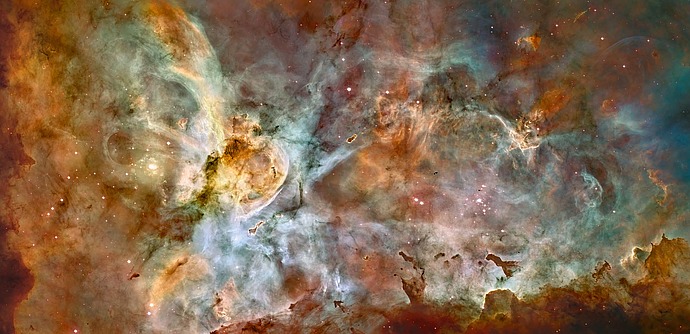
Turbulence in the Heavens
By James Stone, Professor in the School of Natural Sciences and Christopher McKee, SNS Member (1984, 89, 98):
"Star formation is of central importance in astrophysics. It leads not only to the diverse range of stars observed in the Universe, but also (indirectly) to the formation of planets and black holes, the creation of the heavy elements, the energization of the interstellar medium and the circumgalactic medium via feedback from radiation, winds and supernovae, and even the evolution of galaxies. Star formation begins in massive clouds of molecular gas. Observations reveal that turbulent motions inside such clouds are supersonic, resulting in an internal structure driven by shock waves associated with random velocities much greater than the speed of sound. Writing in Nature Astronomy, Christoph Federrath and collaborators describe the highest resolution and dynamic range computer simulation of astrophysical turbulence ever reported, with the aim of understanding how turbulence can create the conditions that lead to the formation of stars."
Read more at Nature Astronomy.


